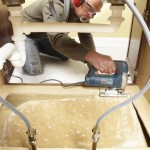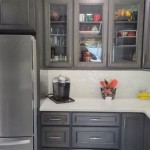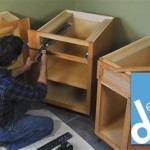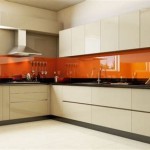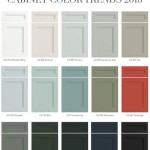```html
1950s Kitchen Cabinet Hardware: A Decade of Design and Function
The 1950s marked a significant shift in American kitchen design, moving from purely functional spaces to rooms reflecting modern aesthetics and technological advancements. Kitchen cabinet hardware, often overlooked, played a crucial role in this transformation. The decade witnessed a departure from the utilitarian hardware of previous eras, embracing sleeker designs, brighter finishes, and innovative materials. This article explores the key features, materials, and styles of 1950s kitchen cabinet hardware, offering insights into its enduring influence on kitchen design.
The Rise of Streamlined Design
Following World War II, American society experienced a period of unprecedented prosperity and optimism. This influenced design trends across various industries, including home furnishings. The 1950s saw the emergence of streamlined designs, characterized by smooth curves, clean lines, and a sense of forward motion. This aesthetic philosophy, often associated with mid-century modernism, heavily influenced kitchen cabinet hardware.
Cabinet pulls and knobs of the era moved away from the ornate and heavy styles of the past. Instead, designers favored simpler shapes, such as elongated bars, sleek curves, and geometric forms. This emphasis on minimalism and functionality reflected the desire for a more efficient and uncluttered kitchen environment. The overall effect was a sense of lightness and modernity, complementing the equally streamlined appliances and countertops that were becoming increasingly popular.
Furthermore, the streamlined design extended to the installation of the hardware. Concealed screws and flush mounting became more common, further contributing to the clean and uncluttered appearance of the cabinets. The goal was to create a cohesive and visually harmonious kitchen, where every element, including the hardware, contributed to the overall aesthetic.
Key Materials and Finishes
The materials used in 1950s kitchen cabinet hardware reflected the era's embrace of technological innovation and mass production. While traditional materials like brass and iron remained in use, new materials such as chrome, aluminum, and plastic became increasingly prominent. These materials offered a combination of durability, affordability, and design flexibility, allowing manufacturers to produce a wider range of styles and finishes.
Chrome was arguably the most popular finish for 1950s kitchen cabinet hardware. Its bright, reflective surface complemented the clean lines of the streamlined designs and added a touch of glamour to the kitchen. Chrome was also relatively easy to clean and maintain, making it a practical choice for busy households. Aluminum, another popular option, offered a similar aesthetic to chrome but was often lighter and more affordable.
Plastic, particularly Bakelite and other early forms of synthetic polymers, also played a significant role. Plastic knobs and pulls were available in a wide range of colors, allowing homeowners to personalize their kitchens and coordinate the hardware with other decorative elements. The use of plastic also enabled designers to experiment with new shapes and textures, further expanding the possibilities for kitchen cabinet hardware design.
Popular Styles and Trends
Several distinct styles and trends characterized 1950s kitchen cabinet hardware. One prominent style was the "atomic" or "space age" look, which reflected the era's fascination with science and technology. This style featured geometric shapes, such as starbursts, boomerangs, and abstract forms, often rendered in chrome or bright colors. Atomic cabinet hardware added a playful and futuristic touch to the kitchen.
Another popular trend was the use of contrasting colors and materials. For example, a cabinet pull might feature a chrome base with a colored plastic insert, or a wooden knob with a metal accent. This contrast added visual interest and depth to the hardware, making it a more prominent design element. The use of color also reflected the broader trend towards brighter and more cheerful kitchens.
Recessed pulls and knobs were also gaining popularity during the 1950s. These hardware options were designed to be flush with the cabinet surface, creating a smooth and seamless look. Recessed pulls were particularly well-suited for modern kitchens with minimalist designs, as they minimized visual clutter and emphasized the clean lines of the cabinets.
Beyond these specific styles, the 1950s also saw the rise of themed hardware. Kitchens might feature cabinet pulls shaped like fruits, vegetables, or other kitchen-related objects. This whimsical element added a touch of personality and character to the kitchen, reflecting the growing emphasis on creating a personalized and inviting space.
Furthermore, the incorporation of integrated hardware became more prevalent. Instead of separate pulls or knobs, some cabinet designs featured handles or finger pulls built directly into the cabinet door or drawer. This approach further streamlined the kitchen's appearance and contributed to the overall sense of modernity. The focus was on creating a cohesive and unified design, where every element worked together to achieve a specific aesthetic.
The availability of mass-produced hardware also allowed for greater uniformity in kitchen design. Homeowners could easily purchase matching sets of cabinet pulls, hinges, and other hardware, creating a consistent and polished look. This uniformity, however, did not necessarily stifle creativity. As mentioned earlier, the wide range of materials, finishes, and styles allowed for considerable personalization within a standardized framework.
The influence of European design trends also began to be felt in American kitchen cabinet hardware during the 1950s. Scandinavian design, in particular, with its emphasis on natural materials, simple forms, and functional elegance, began to influence American designers. The use of wood, often in combination with metal, became more common, adding a touch of warmth and texture to the kitchen.
In addition to aesthetic considerations, functional improvements were also important drivers of innovation in 1950s kitchen cabinet hardware. Self-closing hinges, for example, became more widely available, improving the convenience and safety of kitchen cabinets. Similarly, improved drawer slides made it easier to open and close drawers smoothly and quietly. These seemingly small improvements contributed significantly to the overall functionality and usability of the kitchen.
The emphasis on efficiency and ease of use reflected the changing role of the kitchen in the American home. As women increasingly entered the workforce, kitchens needed to be more efficient and user-friendly. The design of kitchen cabinet hardware played a critical role in achieving this goal, making it easier for homeowners to access and organize their kitchen supplies.
Finally, the 1950s witnessed the increasing integration of kitchen cabinet hardware with other kitchen appliances and fixtures. Matching finishes and styles created a cohesive and unified aesthetic, blurring the lines between different elements of the kitchen. This integration reflected the broader trend towards designing kitchens as complete and integrated spaces, rather than as collections of individual components.
In summary, 1950s kitchen cabinet hardware represented a significant departure from the past, embracing streamlined designs, innovative materials, and a wide range of styles and finishes. These changes reflected the broader trends in American society, including the post-war boom, the rise of mid-century modernism, and the increasing emphasis on efficiency and convenience. The hardware of this era continues to influence kitchen design today, serving as a testament to its enduring appeal and functionality.
```
Retro Chrome Kitchen Cabinet Hardware 50s Vintage Style

Diy 1950s Kitchen Remodel With Painted Cabinets Average But Inspired

Diy 1950s Kitchen Remodel With Painted Cabinets Average But Inspired

Diy 1950s Kitchen Remodel With Painted Cabinets Average But Inspired

1950s Kitchen Cabinets Makeover Cabinet Remodel Old

Our 50s Kitchen Renovation Cabinet Restoration Natalie Curtiss Ilration

Kitchen Updates In The 1950 S Southern Hospitality

Kitchens Through The Decades Kitchen Trends Time

A Retro Inspired Kitchen New Hampshire Home

Where To Find Vintage Kitchen Cabinet Pulls From Youngstown Geneva And Other Makers Retro Renovation
Related Posts

